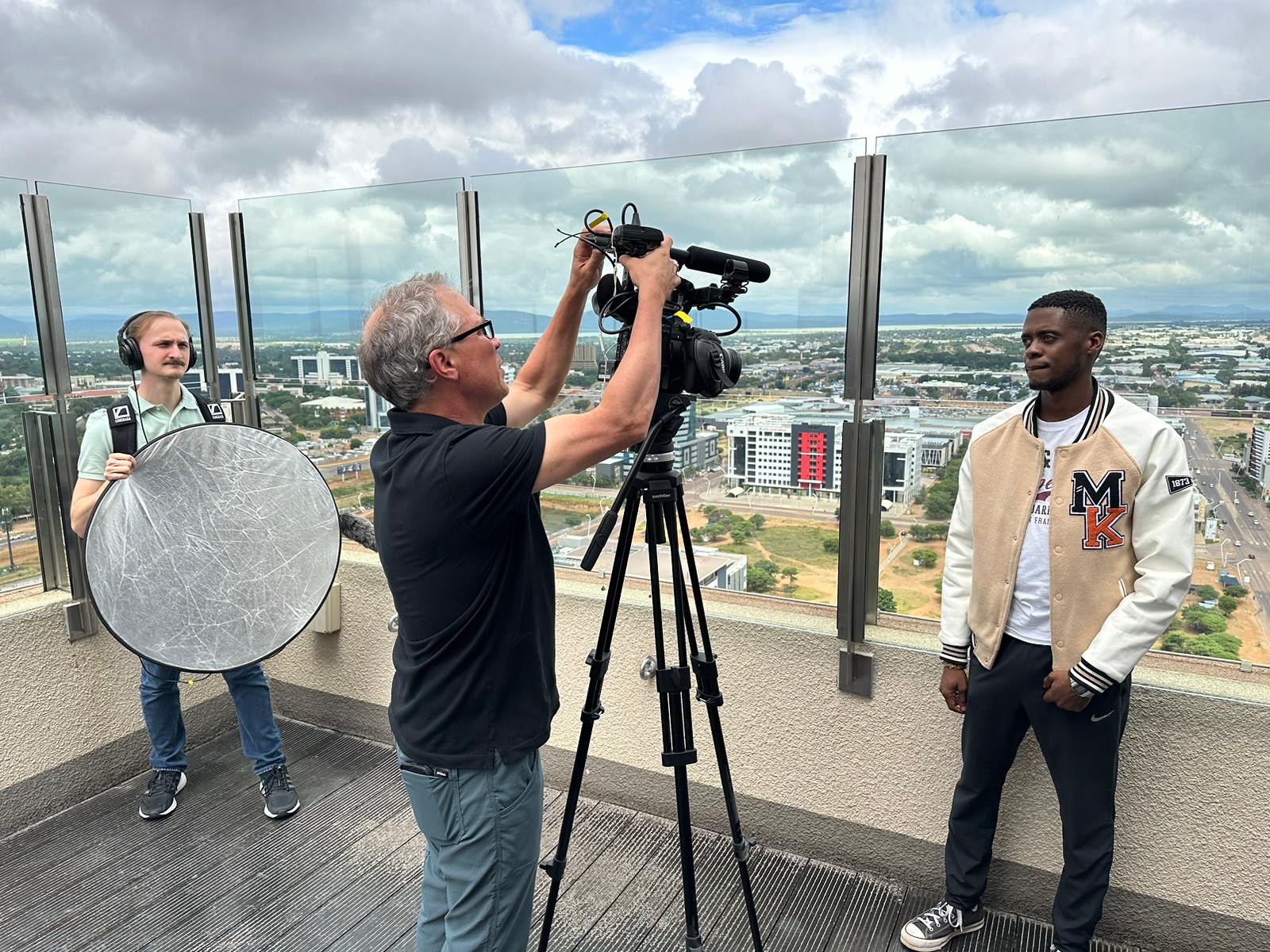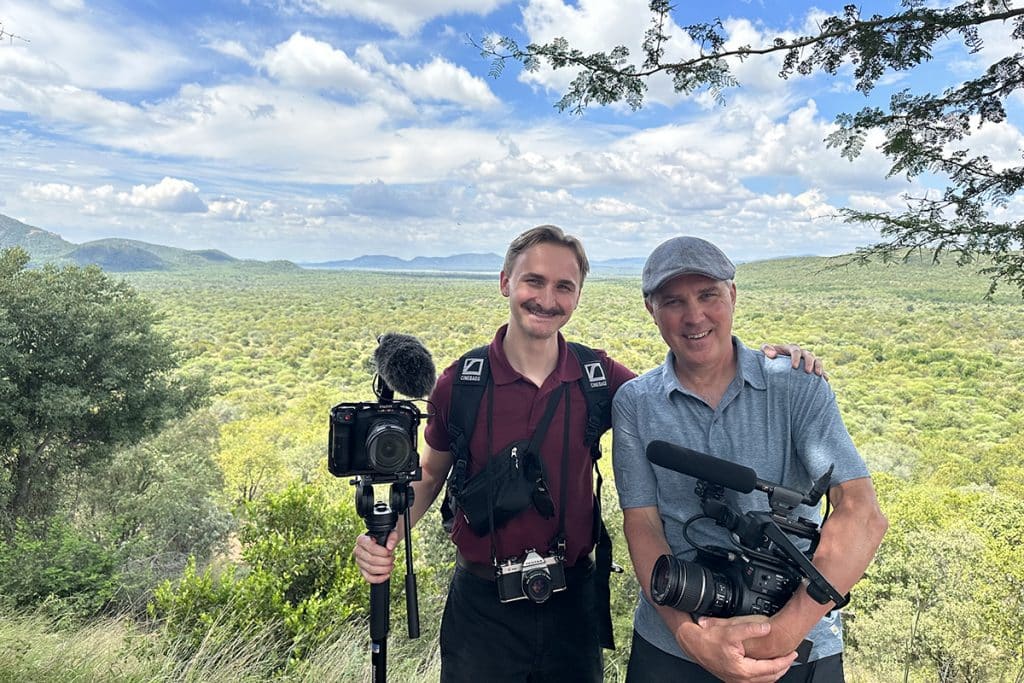Botswana produces 30 percent of the world’s diamonds, but like most African countries with rich resources, they suffer from resource curse—a term used when a country’s natural resources, such as oil, cobalt and diamonds are shipped out without them being able to capture the true value of their assets.
Earlier this year, film professor Bill Carter and student Angel Rodriguez traveled to southern Africa to document a new technology being used in the diamond business that allows host countries to capture more value from their valuable natural resources.
“Africa has a long history of corruption as well as foreign companies extracting their wealth and leaving the local people with nothing to show for it,” Carter said. “The leadership of Botswana wants to change that formula. To do this the government has to do something that is very difficult for any government: they must disrupt themselves. They have to be bold and challenge the status quo of old contracts designed to favor outside corporations.”

That change may be possible thanks to three key players working with local government officials: 1) HB Antwerp, a tech and diamond company redefining how natural diamonds are sourced, cut, polished and sold, whose goal is to ensure the country of origin is benefitting from the minerals sourced there; 2) The Massachusetts Institute of Technology executive MBA team, who will stress test the diamond business model of HB Antwerp and whether it is transferable to other minerals, such as cobalt or lithium; and 3) the NAU film duo there to document the historic work.
Together, they hope to redefine the diamond industry, or at least change who benefits from it.
“The way the diamond business has been run for the last 80-plus years is by having African countries mine for rough diamonds, usually in business with a large company like DeBeers, and then immediately sell those rough diamonds to middlemen who then sell to other middlemen and so on,” Carter said. “A rough diamond is sold and bought by middlemen an average of 21 times. And none of that is done in the countries where the diamonds are mined. And all of this is done with no transparency.”
To change the process, HB Antwerp built a diamond lab in Botswana with plans to train local engineers to evaluate, process and eventually cut diamonds. This not only creates jobs and increases the diamond’s value before it is sold to others, but it also means the country of origin will be getting a much larger cut of the profit, adding an estimated 40 percent gross domestic product increase in the captured value of their diamond stake. Additionally, the model will incorporate a blockchain ledger that allows buyers to know exactly where the diamond has been from the moment it was mined, creating a transparency that has never existed in this industry.
Carter and Rodriguez were there to document this work.
“I got to experience firsthand the impact these little rocks can have on a country,” Rodriguez said. He worked alongside Carter and members of the MIT team throughout the two-week trip, meeting with local government officials and filming in highly secure locations, including the Lucara diamond mine. “I learned more about the world of documentary filmmaking through this trip than any class I have taken so far,” he said. “It has given me both the confidence and experience to walk strong and accomplish any task when approaching future work. I was beyond fortunate to be given such an opportunity by professor Carter.”

Carter believes it’s experiences like this that can shape the future careers of students.
“Action learning is a giant accelerated step in becoming a professional. In this instance, the student was immersed and surrounded by executive MBA students on a task, government officials, business leaders and diamond experts. To be dropped into this environment and be treated as a professional themselves is a giant step in understanding what it takes to do this for a living. It makes what they are learning in class real.”
“This documentary has given me a heightened appreciation for the untold truth and the story that lies within, showing me that film is not just entertainment but a powerful tool that can be used to help and educate,” Rodriquez said. “I don’t know what the future holds for me, but I look forward to the next crazy project that ends up enlightening me even more!”
Watch the documentary below.



